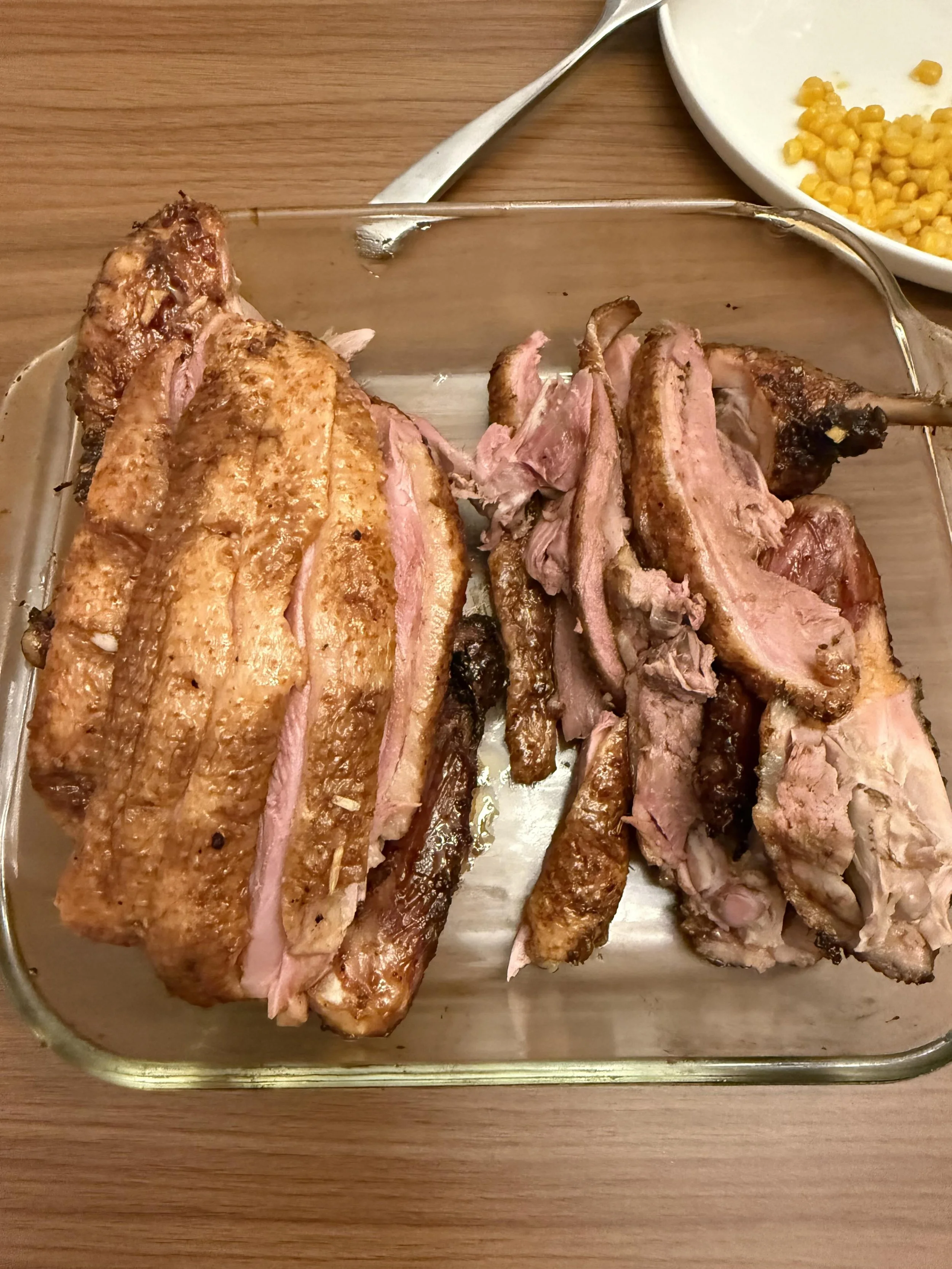A Tale of Two Ducks: How to Smoke a Duck (Step by Step Recipe)
Tonight was pure magic. When we moved onto our five acres at the beginning of the summer, one of our goals was to raise more of our own food. A few weeks ago, we processed our very first ducks—a handful of Silver Appleyards and Rouens—and tucked them into the freezer. This weekend, we finally had the time to cook a couple and taste the fruits of our labor. Since we had two different breeds, we decided to cook one of each and compare them side by side to see if we noticed any differences—and maybe even decide which breed we’d like to raise more of in the future.
Preparing the Ducks
After scrolling through countless recipes, we landed on smoking them. We took inspiration from The MeatEater and a recipe posted by Jess Sowards at Roots and Refuge. We thawed the ducks in the fridge for a couple of days, then gave them a simple overnight brine:
Duck Brine Recipe
1 gallon water
½ cup salt
¼ cup brown sugar
2 bay leaves
8 garlic cloves
Fresh thyme and rosemary
½ lemon
I warmed the mixture on the stove just until the salt and sugar dissolved, let it cool completely, then submerged the ducks and returned them to the fridge for 24 hours.
This afternoon, we removed them from the brine, patted them dry, and rubbed them with a blend of salt, pepper, paprika, ginger, and garlic. Into the smoker they went—breast side up—for about 1 ½ hours at 225°F. When the internal temperature of the ducks reached 145°F, we brushed on a glaze and cranked the heat up closer to 300°F. After another 30 minutes, the breasts registered 160–165°F and were perfectly done.
Duck Glaze Recipe
1 cup orange juice
½ cup maple syrup
½ cup brown sugar
¼ cup soy sauce
Fresh ginger
6 garlic cloves
The Taste Test: Silver Appleyard Duck vs. Rouen Duck
Both ducks were absolutely delicious, but we noticed some differences:
Silver Appleyard Duck: Larger in size with a thicker layer of skin and fat—great for feeding our family of six. The meat texture had more chew, similar to a t-bone steak.
Rouen Duck: Smaller but incredibly tender, with meat texture that reminded me of filet mignon.
We thought this experiment would help us choose one breed to raise, but in the end, we couldn’t pick just one. We’ve decided to keep a male and a couple of females from both breeds so we can enjoy the benefits of each. With luck, they’ll give us ducklings in the spring to raise and fill the freezer once again.
Nothing Goes to Waste
As we savored the last bites, I realized the story of these ducks wasn’t quite finished. I saved both carcasses and tucked them into a stockpot with onions, carrots, celery, and bay leaves. They’ll simmer overnight, and by morning, we’ll have rich, nourishing bone broth to turn into soup this week.
Reflections
This was the very first meal we’ve raised and enjoyed here at our new home, and it felt so rewarding. The process took months—from raising the ducks to processing, brining, smoking, and finally sitting down together—but every moment was worth it. And this is just the beginning. I can’t wait for all the meals still to come from this little piece of land.
Do you have a favorite way to cook duck? I’d love to hear your favorite recipes- share them in the comments below!



